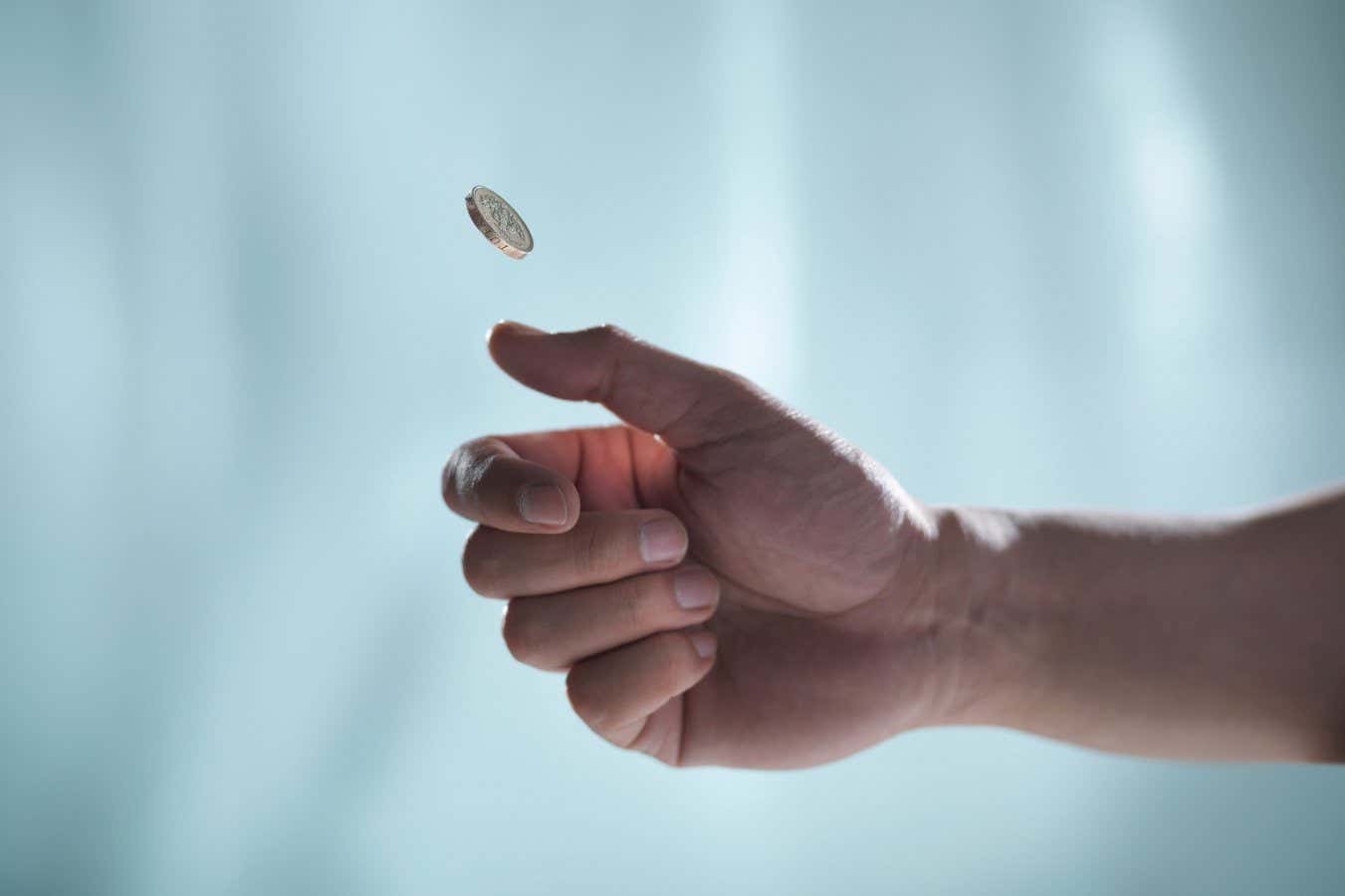Researchers who flipped coins 350,757 times have confirmed that the chance of landing the coin the same way up as it started is around 51 per cent
By Matthew Sparkes
17 October 2023
Place your bets
Image Source Trading Ltd/Shutterstock
If you flip a coin, the odds of getting heads or tails are an equal 50 per cent chance – right? While this is what statistics textbooks will tell you, there is increasing evidence that it isn’t quite true in the real world.
In 2007, researchers theorised that when a coin is flipped, the flipper’s thumb imparts a slight wobble to it, causing it to spend more time with one side facing upwards while in the air and making it more likely to land showing that side. They predicted that a coin should land showing the same side that was facing up when flipped approximately 51 per cent of the time.
Now, František Bartoš at the University of Amsterdam in the Netherlands and a team of 49 others have conducted the most robust test of this theory yet carried out. He recruited dozens of friends and colleagues for a marathon coin-flipping session.
Advertisement
“When you and your friends sit in a room, play some music, chat, it’s like a nice activity,” he says. “Some people watch movies together and some people flip coins for 12 hours. It’s actually much more pleasant than you would expect.”
The team tossed coins of 46 different currencies and denominations 350,757 times and recorded both the pre-flipping and post-flipping state. The findings backed up the original research: coins are likely to land on the same side they started on 50.8 per cent of the time.
Crucially, though, the team found large variations in flippers. One person landed coins on the same side they started on 60.1 per cent of the time, while one at the other end of the spectrum landed their coins in this way just 48.7 per cent of the time. The researchers say that different people may impart more off-axis rotation when they flip a coin, causing it to wobble and creating a higher same-side bias.
